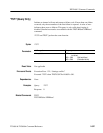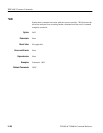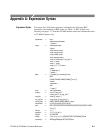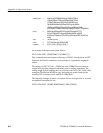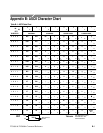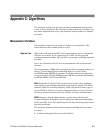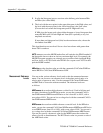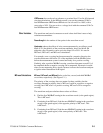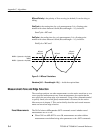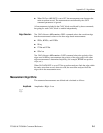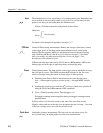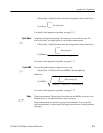
TVS600 & TVS600A Command Reference
C–1
Appendix C: Algorithms
The waveform analyzer can take many automatic measurements and perform a
variety of other calculations. By knowing how they make these calculations, you
may better understand how to use your waveform analyzer and how to interpret
the results.
Measurement Variables
The waveform analyzer uses a variety of variables in its calculations. This
section discusses each variable and how to set it.
High is the value used as the 100% level in measurements such as fall time and
rise time. For example, if you request the 10% to 90% rise time, then the
waveform analyzer calculates 10% and 90% as percentages with High represent-
ing 100%.
Low is the value used as the 0% level in measurements such as fall time and
rise time.
The exact meaning of High and Low depends on which calculation method you
choose. To set the method used to determine High you use the CALCu-
late:WMParameter:HMEThod command. To set the method used to determine
Low you use the CALCulate:WMParameter:LMEThod command. The methods
are PEAK, MODE, AUTO, and ABSolute.
PEAK defines the 0% and the 100% waveform levels as the lowest amplitude
(most negative) and the highest amplitude (most positive) samples. The PEAK
method is useful for measuring frequency, width, and period for many types of
signals. PEAK is sensitive to waveform ringing and spikes, however, and does
not always accurately measure rise time, fall time, overshoot, and undershoot.
MODE attempts to find the highest density of points above and below the
waveform midpoint. It attempts to ignore ringing and spikes when determining
the 0% and 100% levels. This method works well when measuring square waves
and pulse waveforms.
The waveform analyzer calculates the histogram-based High and Low values
as follows:
1. It makes a histogram of the record with 256 bins.
High and Low



